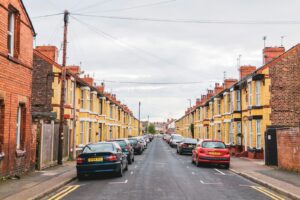Glasgow council set to move offices to regeneration areas
 Glasgow City Council is considering moving some of its council offices from the city centre to key regeneration areas across the city, as part of a new strategy.
Glasgow City Council is considering moving some of its council offices from the city centre to key regeneration areas across the city, as part of a new strategy.
Councillors are set to vote soon on whether the local authority should adopt a new property and land strategy, which would see some council offices from the city centre moved to other parts of the city.
According to the council, this could act as a ‘catalyst for social and economic regeneration in local communities’.
The council said it would also work with community groups, public agencies and third sector organisations to ensure services meet local needs and priorities, and the new strategy will inform how these needs and priorities are best met through the council’s estate by measures such as co-location and investing in / repurposing sites.
The council has the biggest land and property estate in Glasgow, with more than 1,000 operational properties, including schools and nurseries, care homes, offices, community and sports centres, museums, galleries and libraries, as well as surplus property and land.
‘The council’s property and land strategy will consider how our estate could be used more efficiently and effectively, with communities more closely involved and better served,’ said city convener for neighbourhoods, housing and public realm, Cllr Kenny McLean.
‘The council would also have reduced costs in the years ahead through the strategy and the ability to raise capital receipts would help deliver improved public services to the people of Glasgow.
‘The proper location of these services would also contribute to the regeneration of neighbourhoods across the city,’ added Cllr McLean.
Three complimentary asset plans will support the new strategy: the community asset plan; the built heritage plan, and the vacant and derelict land plan.
The first of these reflects the council’s commitment to the greater involvement and empowerment of our citizens; the second provides a consistent and considered approach to the stewardship of the council’s built heritage; and the third addresses the potential blight, cost and missed opportunity that vacant and derelict properties and land can represent for the council and the city.















